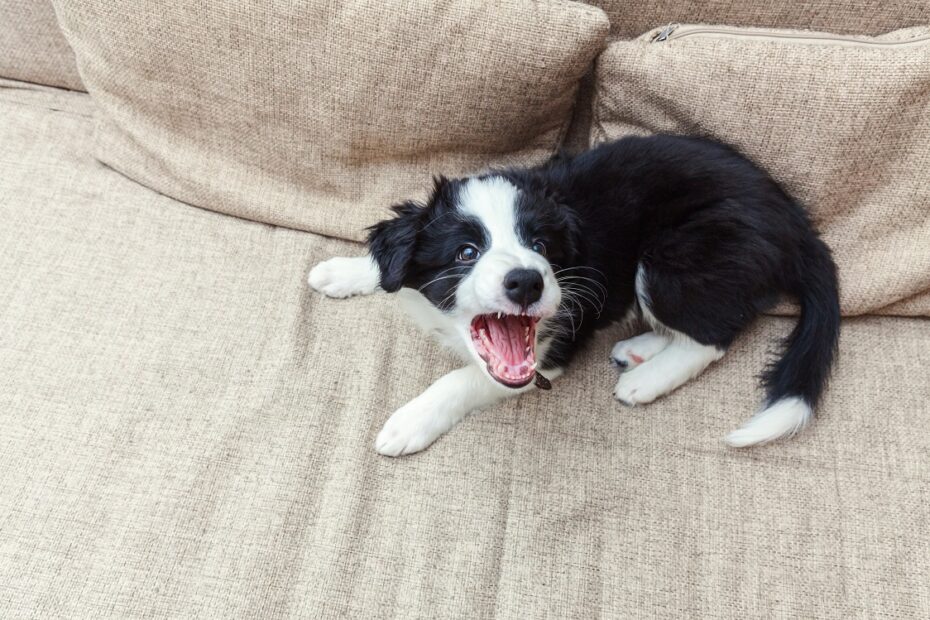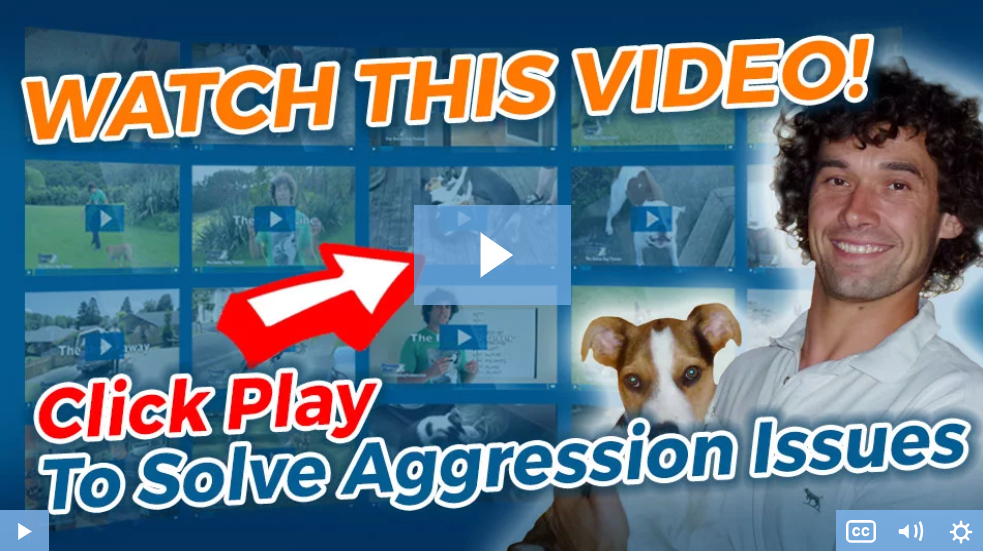If you want to learn how to calm an aggressive dog then I hear you, as do the thousands of other owners dealing with the exact same issue.
After all, no one wants to consider the possibility that their little bundle of fun has grown into a dog with a serious problem.
But ultimately, aggressive behaviors like barking, growling, snapping, and lunging ARE serious issues. They’re also ones you need to get to grips with ASAP.
Burying your head in the sand might be tempting, but it isn’t going to make the problem go away.
For your sake, for your dog’s sake, and for the sake of anyone your dog might come into contact with. You need to find a way to manage their behavior.
Unfortunately, aggression isn’t something that can’t be cured overnight.
No matter what training technique you use, you’re not going to wake up tomorrow to find the aggression has disappeared.
But providing you’re prepared to put in the work, there are ways you can help curb the aggressive behavior and teach your dog to keep calm.
Before we start looking at those ways, just one little reminder…
A tense dog isn’t a teachable dog… and a tense moment isn’t a teachable moment.
Regardless of what positive training technique you use, you’ll need to find a way to help your dog gain control of their emotions.
Step one? …take a look at the Dog Calming Code from the Dan Abdelnoor over at The Online Dog Trainer. (see video below)
Designed to help keep your dog’s emotions in check, this unique program will show you how to quickly put your dog in a calm relaxed state. A key ingredient in stopping undesirable behaviors like aggression.
Watch the video, implement the training Dan recommends – the end result will be a calmer dog who’s ready and willing to engage in your training.
Here’s the link to take a look: Click Here To Discover How To Finally Stop Your Dogs Unwanted Aggression… Even If You’ve Tried & Failed Before!
(video will open in a new window)
What Causes Aggression?
Every dog is unique. What drives Dog A to snarl, growl, lunge, or bite might not be the same as what drives Dog B to do the same.
The first step in addressing your own dog’s behavior is figuring out what’s behind it.
Some dogs might growl if someone approaches them while they’re eating or playing with a toy.
Others may reserve their aggression for other dogs. Others yet may go crazy at the sight of a spinning wheel or some other object.
Before you launch straight into training, spend a moment taking stock.
What makes your dog lose control?
Is it a person, a thing, a situation?
Consider the following common causes of aggression. Which sounds most familiar?
Fear Aggression
What looks like aggression is often no more than fear.
The causes of fear are numerous. Maybe the dog has a history of abuse, has been passed between multiple homes, hasn’t been socialized, or has experienced some other type of trauma.
Regardless of the root cause, the result is the same: the dog feels under attack, threatened, and obliged to retreat.
If they think they’re cornered and can’t escape, they’ll attack.
Social Aggression
Dogs can live alongside each other in perfect harmony, but don’t forget – these are pack animals. And packs have hierarchies.
If you live in a multi-pet household, your dogs might establish a pecking order quickly, easily, and with barely a bad word spoken. But they might not.
If your dogs can’t decide which of them’s the daddy, they’re likely to keep duking it out until they do.
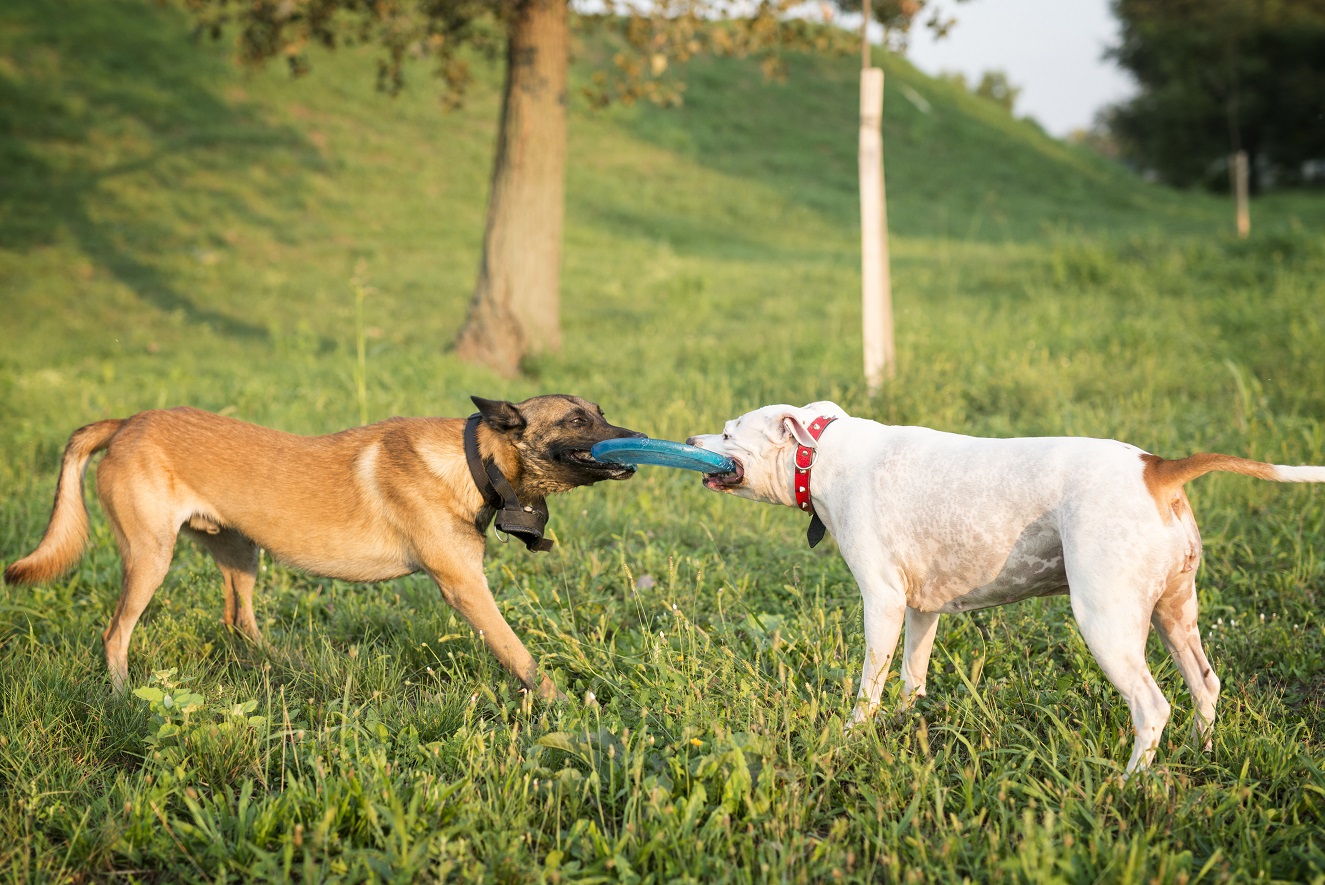
Protective Aggression
Some dogs will go to any extreme to protect their pack. So if a member of their family is being threatened, they won’t hesitate to go on the offensive.
Possessive Aggression
Don’t underestimate just how highly some dog’s value their chews, toys, food, and bones.
And never, ever underestimate just how far they’ll go to protect their precious possessions if they feel someone (or something) is intent on taking them away.
Frustrated Aggression
If a dog gets aroused by a sight or a smell but can’t act on it (perhaps they’re leashed or behind a fenced yard), they can become frustrated and prone to acting out.
Pain Aggression
Dogs can’t tell us when they’re in pain. Not with their words, in any case. But some do give us warning signs, nonetheless.
So if a normally placid dog suddenly starts lashing out, they might be in pain.
Hormonal Aggression
If a dog feels they have to compete for the attention of a mate, they can quickly resort to aggression. The problem is usually limited to male dogs but can also apply to female dogs in some circumstances.
For obvious reasons, this type of aggression will only be seen in dogs that haven’t been neutered or spayed.
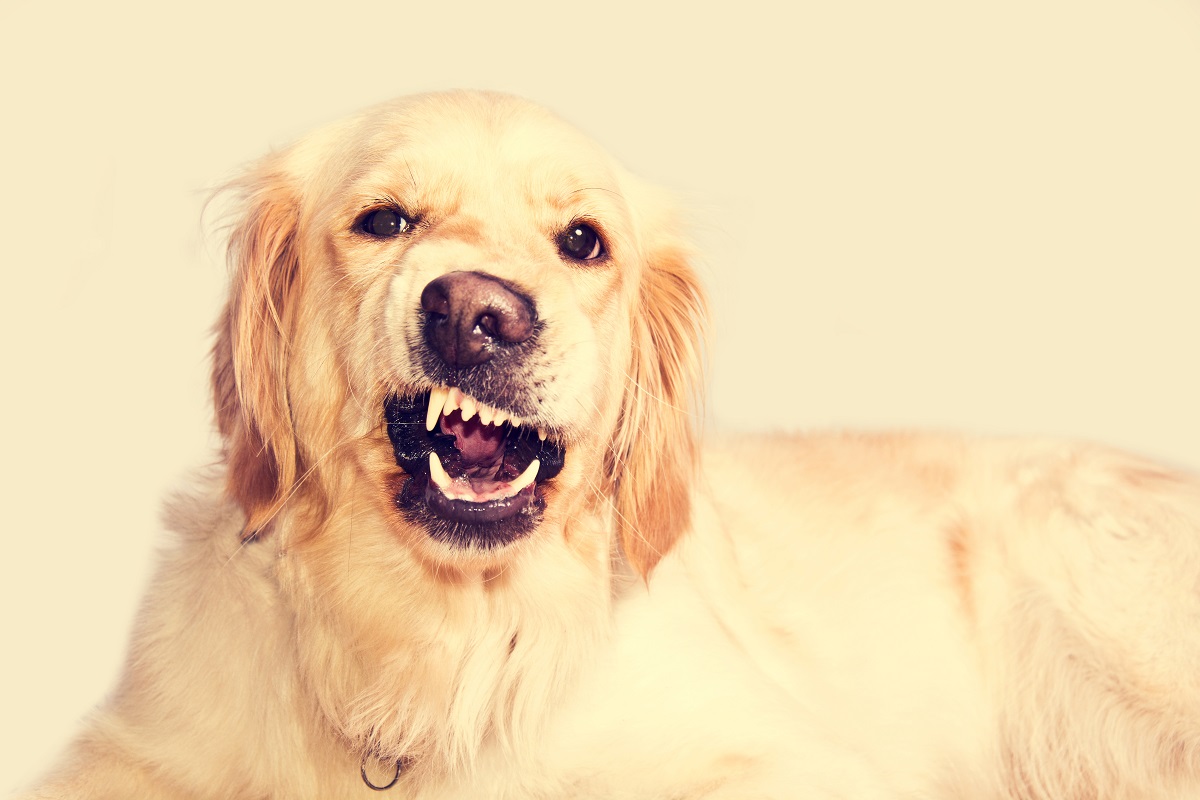
Breed- Specific Aggression
Some dogs are naturally more inclined towards aggression than others. Wolf hybrids, Rottweilers, Dobermans, pit bulls, German Shepherds, and Akitas are all examples of this type.
This doesn’t mean these breeds are guaranteed to be aggressive, nor does it mean they’re ‘bad’ dogs.
In most cases, it simply means that they’ve been bred as protectors, hunters, and guards for so long, those characteristics are now hardwired into their brains.
Territorial Aggression
No one likes to feel that their personal space is being invaded, but some dogs hate it more than most. If they feel their space or home is under attack from an ‘intruder’, they won’t hesitate to defend it.
Jealousy Related Aggression
Maybe you’ve recently introduced a new pet to the home or perhaps you’ve even welcomed your first child.
Either way, your attention is probably a little divided these days.
If your dog is used to being Queen Bee, they might be feeling a little jealous. And once the green-eyed monster strikes, it’s often just a matter of time before the teeth start coming out.
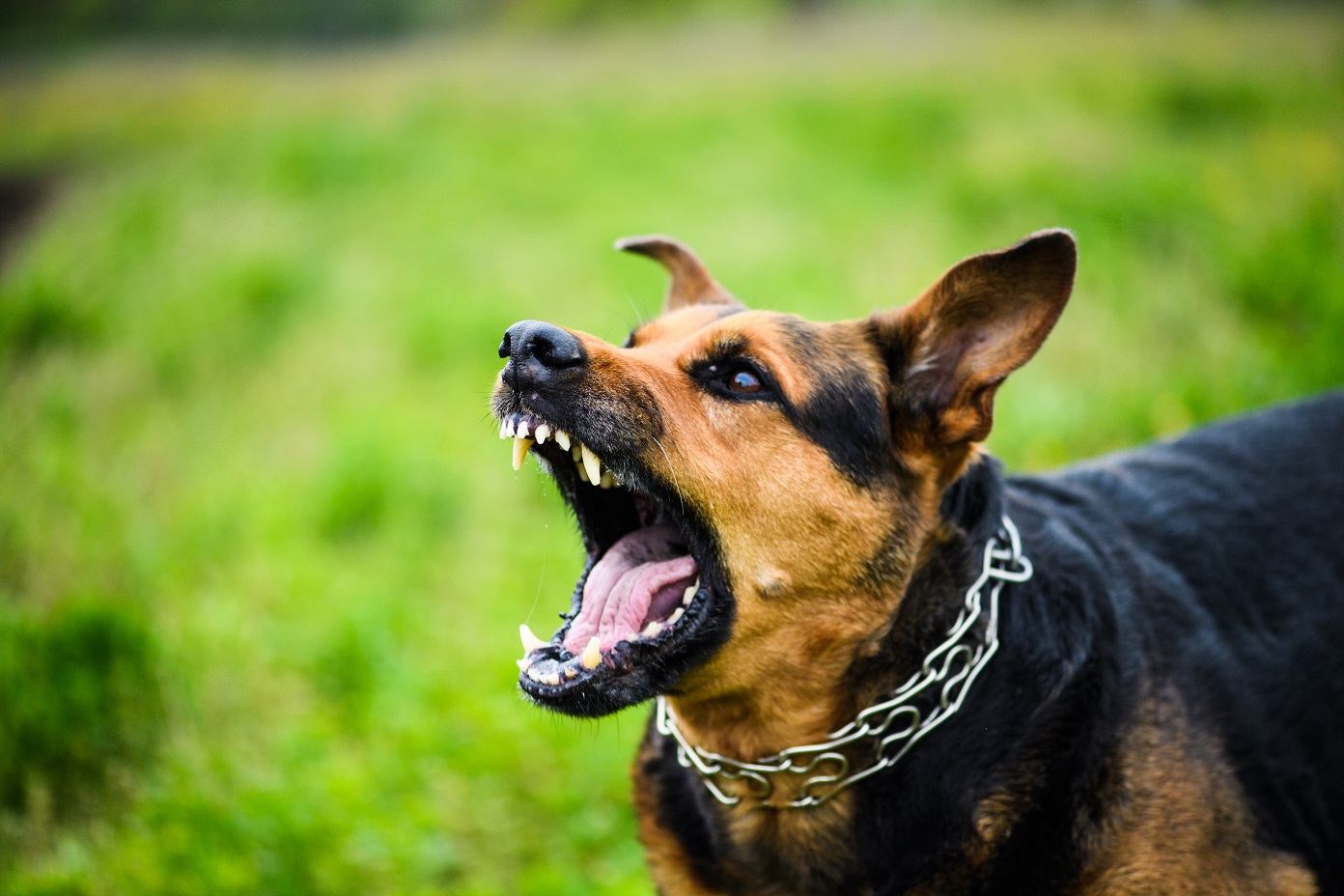
How to Calm an Aggressive Dog
Now you have a better understanding of what’s driving your dog’s behavior, you can start moving forward.
But before we look at some of the steps you can take to manage your dog’s behavior, just remember one thing…
An excitable, tense, or agitated dog is one that’s going to be extremely difficult to teach. If you want to maximize the productivity of your training sessions, calming your dog beforehand is essential.
Remember the Dog Calming Code I mentioned earlier? Now’s the time to take a look.
If your dog is calm, focused, and alert, I guarantee both you and them will get 100% more from the training.
Prevention is Key
Anyone who promises you an overnight cure to your dog’s aggression is a liar. Regardless of the behavior modification technique you use, it’s going to take time.
In the meantime, you need to find ways to reduce the risk. Think about what’s caused your dog to become aggressive.
- Do they get protective over certain toys?
- Do they lash out at other dogs during walks?
- Do they snarl at house guests?
Whatever it is that’s causing the aggression, you need to practice management techniques to avoid putting yourself or other people at risk.
This might involve using a muzzle when you’re on walks, walking your dog during very quiet times of the day, or using gates to separate your dog from visitors.
These solutions aren’t permanent fixes, but they will at least keep everyone safe in the interim.
Learn Dog Language
Very few dogs will launch into an attack without first giving a warning sign.
Once you learn how to recognize and interpret that sign, you can apply the brakes before a situation escalates.
If your dog is starting to feel threatened or on the defensive, their body language changes.
Their posture becomes stiff and rigid, their tail will pulsate, their muzzle will wrinkle, and their gaze will become fixed.
Depending on the cause, they might position themselves between you and the ‘threat’; they may run away and hide, or they might drag a toy away and stand over it.
If any of those things happen, stop what you’re doing. Your dog’s not comfortable. And if you don’t dial the tension down straight away, it’s not going to get better.
Lower your voice. Soften your body language. Avoid petting them, and don’t even think of letting your child approach them.
If they have a toy, don’t try to remove it until they’ve calmed down completely and have moved to another room.
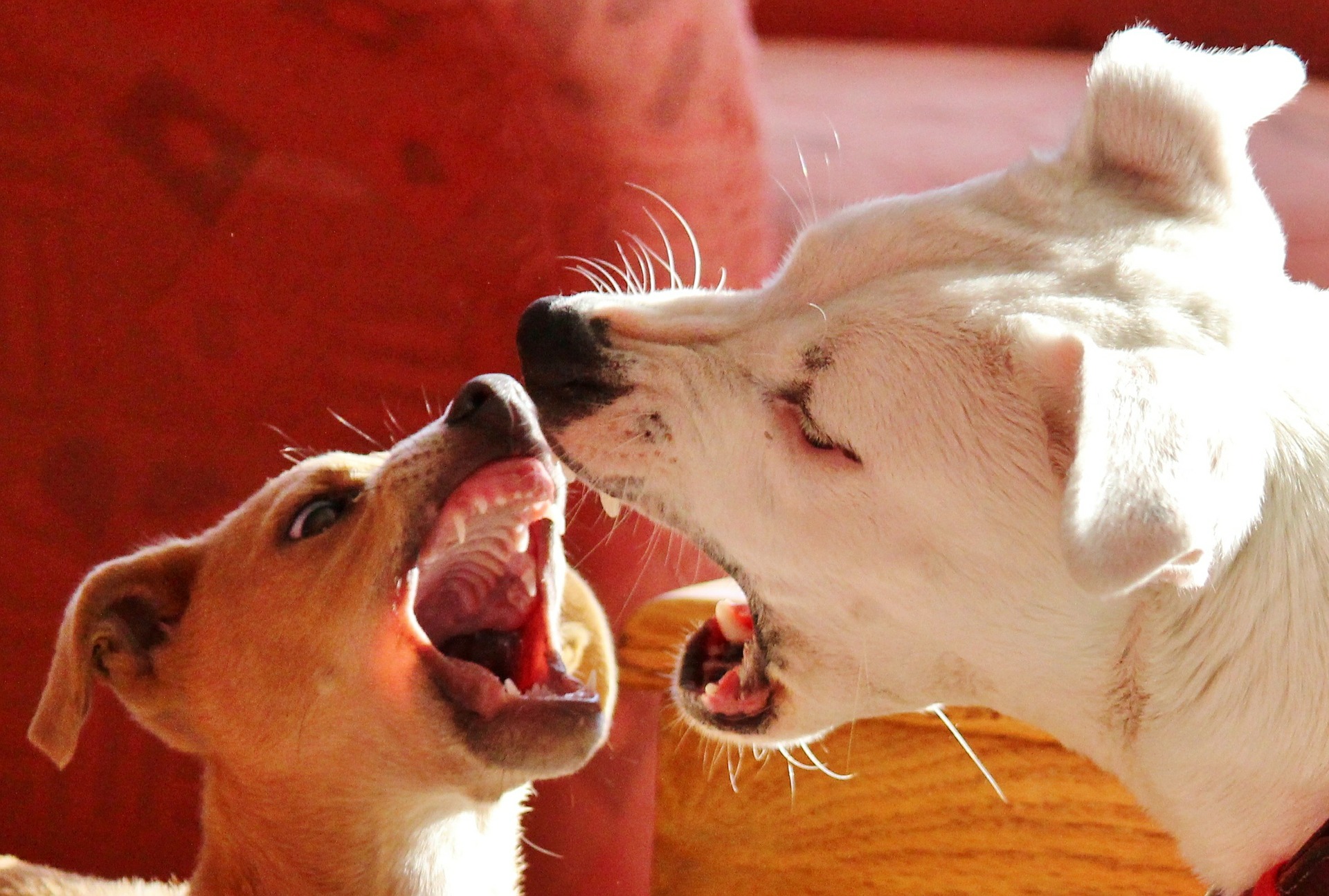
Never Punish Aggressive Behavior
Aggression + Aggression = A Bad Idea.
Screaming, yelling, waggling your fists around – none of this is going to help.
Adding anger and force to an already volatile situation is only going to make it even more dangerous than it is already.
I’m not saying it’s not hugely frustrating and even frightening when your dog displays aggressive behavior.
But heaping aggression on top of aggression is never going to end well.
By punishing the warning signs of aggression – a bark, a growl, a snarl, etc. – your dog might stop giving you a heads-up before they bite.
As learning to recognize those warning signs is one of the keys to managing aggression, that’s really not something you want to do willingly.
If you want your dog to learn to manage their own emotions, you need to lead by example. Stay calm.
Pay a Trip to the Vet
If your dog’s aggression seems to have arisen from nowhere, rule out a medical problem or injury before anything else.
A dog who’s in pain or discomfort can lash out or become aggressive without any prior history of aggression.
Older dogs can also experience cognitive dysfunctions that make them prone to mood changes and out-of-character behavior.
If your vet identifies an issue, they’ll work with you to draw up a treatment plan to tackle the root cause.
If your dog’s aggression is rooted in fear, they may also be able to prescribe anti-anxiety medication as a short-term solution while you work on addressing the problem long term.
Try Behavior Modification
Behavior modification techniques like classical conditioning and desensitization are commonly used to treat aggression and other undesirable behaviors.
They work by re-conditioning your dog’s attitude to certain triggers.
Say, for example, your dog is fearful or aggressive towards strangers.
Start by standing at a comfortable distance from an unfamiliar face. It needs to be far enough away that your dog doesn’t feel threatened or forced to respond with aggression.
Through treats and positive praise, work on gradually reducing the distance.
You’ll need to reduce it very gradually, but over time, your dog should learn to stop seeing strangers as a threat and start equating them with good things.
If your dog’s aggression is mild and hasn’t yet gone beyond the ‘warning’ signs of aggression. You might like to use the technique in your own training.
If, on the other hand, the dog has actually bitten or attacked you or another person, or if you don’t feel confident in recognizing the warning signs. It’s advisable to consult an animal behaviorist.
A professional will work with you to devise a tailored treatment plan. They’ll also help you identify the warning signs and potential triggers of your dog’s aggression so you can implement preventative measures while the training’s ongoing.

Increase Their Exercise
Exercise is by no means a cure-all, and it’s certainly not going to ‘fix’ your dog’s aggression.
But there’s something to be said for the idea that a tired dog is a happy dog.
If your dog is getting all of their physical and mental needs met. Any minor behavioral problems that are arising out of frustration or boredom are likely to be improved.
Keep Them In The Zone
I’ve said it before, but it’s important enough to bear repeating…
A tense dog isn’t a trainable dog.
Trying to get a dog to learn a new behavior when their heckles are rising, and their lips are snarling just ain’t gonna work.
Before you start any training session, work on getting your dog in the ‘zone’ via the Dog Calming Code.
A calm, focused dog is going to learn. An over-excited, agitated dog is going to do anything but.
Final Thoughts
Aggression is a serious problem. It’s also not the kind of problem that’s going to go away on its own accord.
Whatever the cause of your dog’s behavior, it’s down to you to figure it out and find the solution.
It’s not going to be easy, and it’s not going to be quick.
But whatever you do, don’t give up.
If you’re struggling to cope on your own, speak up. There’s a world of resources and people that can help turn the situation around.
No matter how challenging it seems at the moment, your dog’s behavior CAN be improved.
